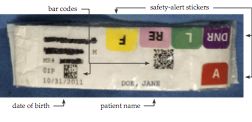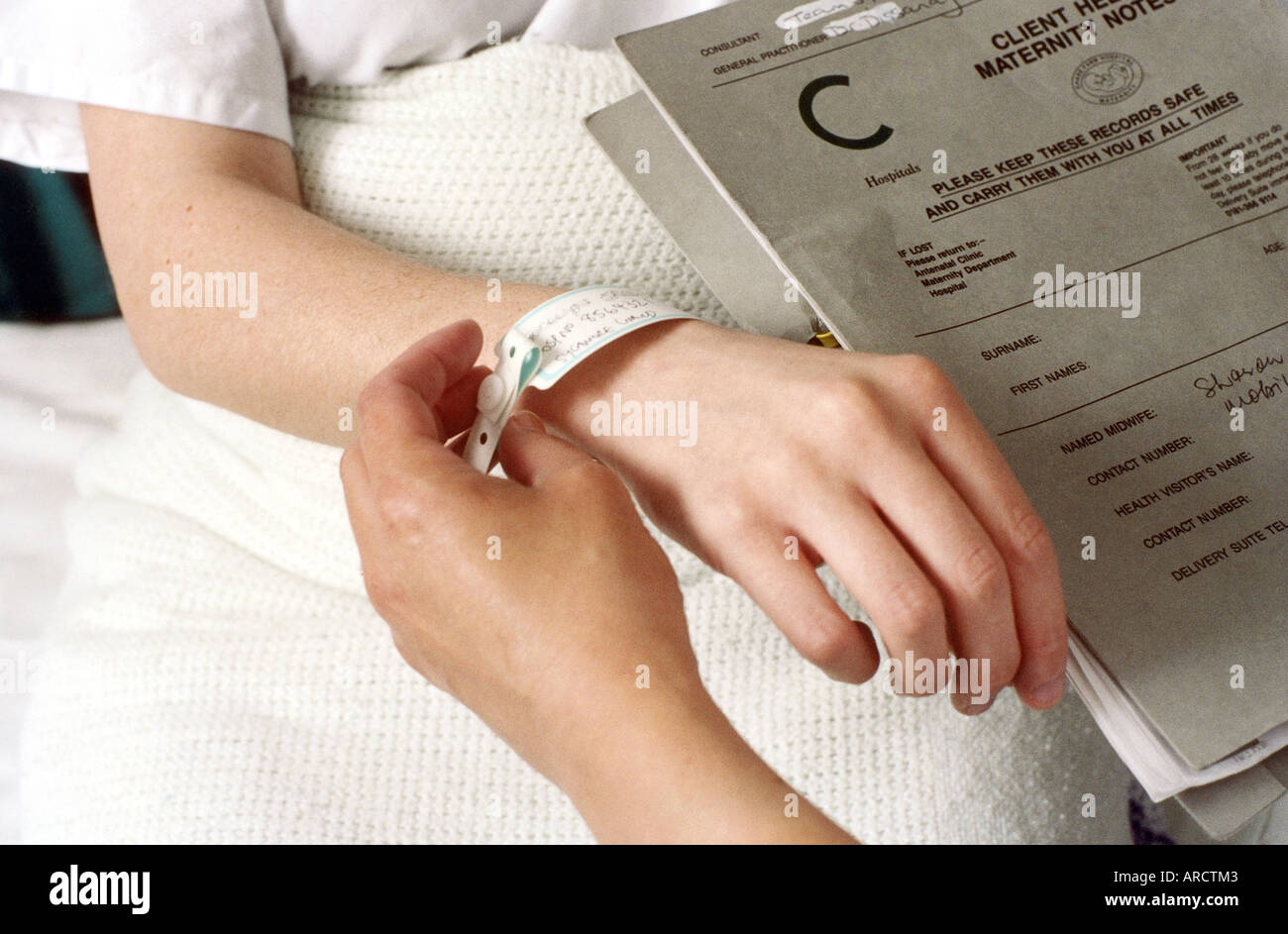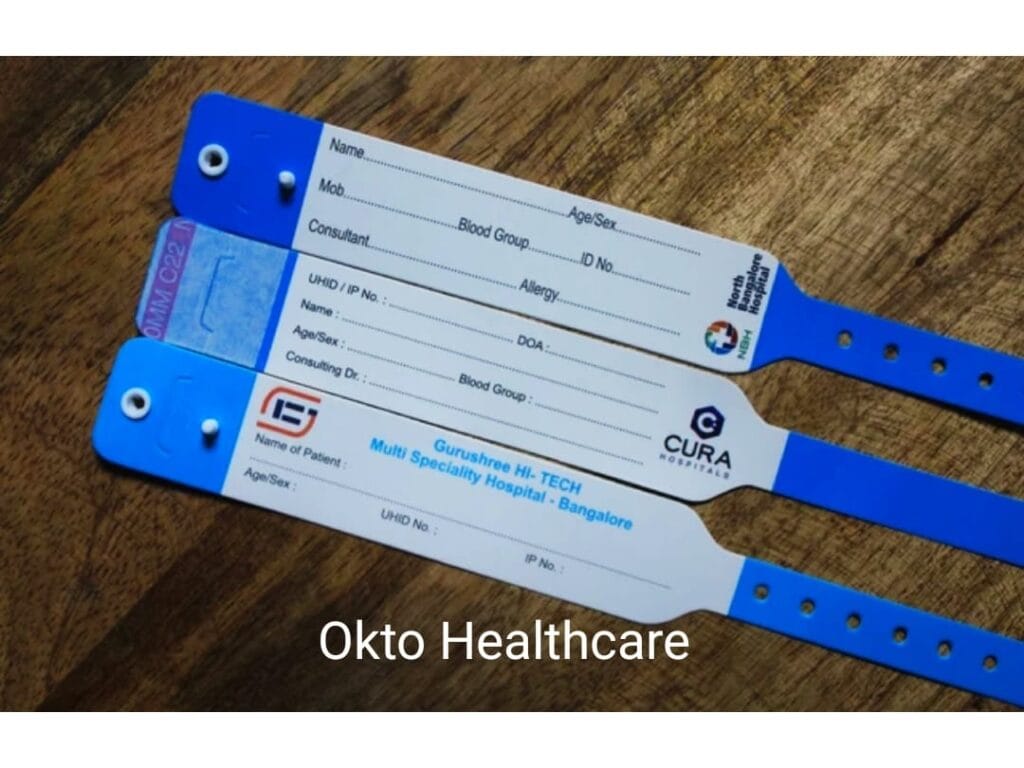Patient Identification Band: Ensuring Conformity and Safety And Security in Health care
Patient Identification Band: Ensuring Conformity and Safety And Security in Health care
Blog Article
Client Recognition Bands: A Trick Tool for Improved Medical Precision
Patient recognition bands represent an essential component in the search of clinical accuracy and person security within healthcare atmospheres. The true extent of their influence on patient end results and total health care high quality warrants further assessment.

Relevance of Patient Recognition
Patient recognition is a critical component of healthcare that ensures the safety and precision of clinical treatment. Appropriate recognition protocols are vital to protect against clinical mistakes, which can lead to negative individual results, including inaccurate drug administration, misdiagnosis, or inappropriate therapy strategies. The importance of accurate individual identification can not be overemphasized, as it works as the foundation for efficient interaction among medical care suppliers.
In settings where multiple individuals are getting therapy at the same time, the risk of identity complication rises. Implementing robust recognition systems helps mitigate these threats and boosts individual security. Patient Identification Band. In addition, exact recognition contributes to the honesty of clinical records, ensuring that patient backgrounds, allergies, and previous therapies are correctly linked to the ideal individual.
Furthermore, compliance with regulative criteria and certification requirements usually mandates rigorous client identification procedures, fostering a culture of accountability and high quality treatment. Ultimately, the relevance of patient identification transcends plain administrative jobs; it is a basic element of providing high-grade medical care that focuses on individual security and boosts medical outcomes. Buying efficient recognition techniques is not simply advantageous-- it's essential in today's facility medical care landscape.
Kinds Of Person Identification Bands
In health care setups, various kinds of person identification bands are used to guarantee precise identification and boost safety. These bands function as a crucial device in stopping medical errors connected to individual misidentification.
One of the most typical type is the conventional wristband, generally constructed from durable plastic and published with the client's name, date of birth, and an unique recognition number. These wristbands are often color-coded to share specific details, such as allergic reactions or various other clinical problems.
An additional type is the barcode wristband, which incorporates a scannable barcode connected to the person's digital health record. This technology enables effective information retrieval and confirmation during drug management and various other clinical processes.
Additionally, RFID (Superhigh Frequency Identification) bands are becoming increasingly popular. These bands can connect wirelessly with hospital systems, permitting real-time monitoring and identification of patients, thereby simplifying workflows and enhancing individual safety.

Benefits for Doctor
Utilizing individual identification bands provides substantial benefits for doctor, improving both operational performance and individual security. These bands serve as a crucial device in enhancing client management procedures (Patient Identification Band). By guaranteeing accurate recognition, doctor can reduce the risk of management errors, such as mislabeling samples or misdirecting therapies, which can cause costly hold-ups and problems
Moreover, individual recognition bands facilitate smooth communication among the health care group. With easily accessible and standard client details, providers can make educated choices rapidly, boosting general operations. This efficiency is especially vital in high-pressure atmospheres such as emergency situation departments, where time-sensitive treatments are critical.
The application of recognition bands also supports conformity with governing requirements and ideal practices, thus decreasing the risk of legal effects stemming from identification errors. Additionally, making use of these bands enhances data accuracy in electronic wellness documents, leading to better treatment control and continuity.
Influence On Individual Safety
Accurate patient recognition is a foundation of health care security, dramatically lowering the probability of errors that can compromise client well-being. Using patient identification bands is important in making sure that each individual gets the right therapy, medicines, and procedures. These bands function as a reputable reference factor browse around this site for medical care experts, lessening the danger of misidentification, which can cause severe repercussions such as inaccurate drug administration or medical mistakes.
The implementation of standard patient identification bands adds to a society of security within healthcare setups. By giving clear, conveniently understandable information, these bands help to enhance the value of validating person identity at every phase of care. Moreover, they assist in communication among team member, guaranteeing that every person included in a client's treatment recognizes their particular demands and demands.
In addition, making use of client recognition bands can enhance the precision of electronic health and wellness documents, additionally decreasing the potential for errors - Patient Identification Band. By focusing on client safety and security through reliable identification techniques, medical care carriers can foster trust fund and confidence among individuals, ultimately causing better medical end results and improved client satisfaction. The effect of correct client recognition can not be overemphasized; it is a fundamental aspect of top quality healthcare shipment
Finest Practices for Execution
Effective application of patient identification bands is important for improving individual security and minimizing click here for more info mistakes in medical care setups. To attain this, health care companies should adopt a number of ideal methods. First, staff training is essential; all team members must understand the importance of accurate person recognition and the treatments for band application. Regular training sessions and refresher training courses can make sure recurring conformity.
Second, the design of the recognition bands should prioritize exposure and durability. Bands should be very easy to read, contain important client details, and withstand everyday wear. Utilizing color-coding can additionally boost quick identification.


Third, integrating digital health documents (EHR) with identification band systems can simplify process. Automated informs for disparities in client recognition can prevent potential errors before they happen.
Lastly, performing regular audits and feedback sessions will certainly assist determine locations for renovation. Involving team in these conversations fosters a society of safety and responsibility.
Conclusion
In final thought, client identification bands play an essential function in improving clinical precision and ensuring patient safety within health care systems. Embracing finest methods for implementation promotes a society of security, inevitably Find Out More leading to boosted person end results and better trust fund in medical care solutions.
Person recognition bands stand for an important part in the quest of medical accuracy and client safety within health care atmospheres.Utilizing client identification bands offers significant benefits for medical care suppliers, improving both operational efficiency and patient safety. By focusing on patient safety and security via reliable recognition techniques, health care companies can foster depend on and confidence amongst people, inevitably leading to far better professional outcomes and enhanced client fulfillment.Effective execution of client recognition bands is critical for enhancing client safety and lessening errors in medical care settings.In verdict, individual identification bands play a vital role in improving clinical accuracy and ensuring person safety within health care systems.
Report this page